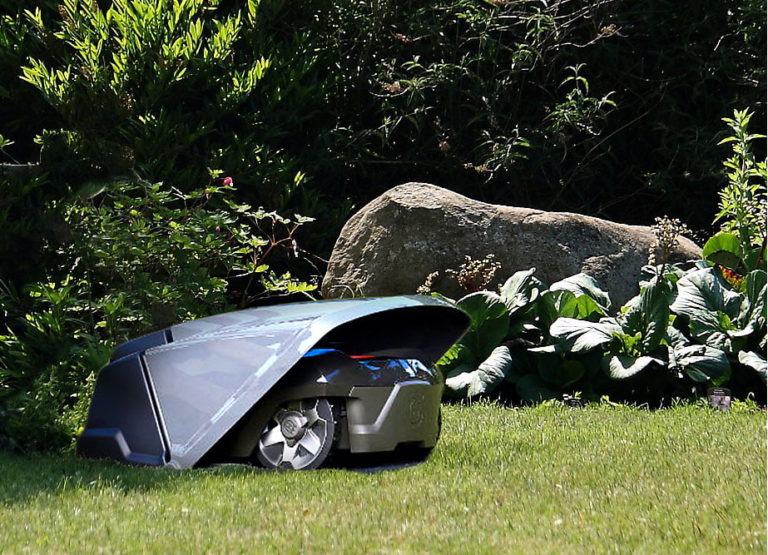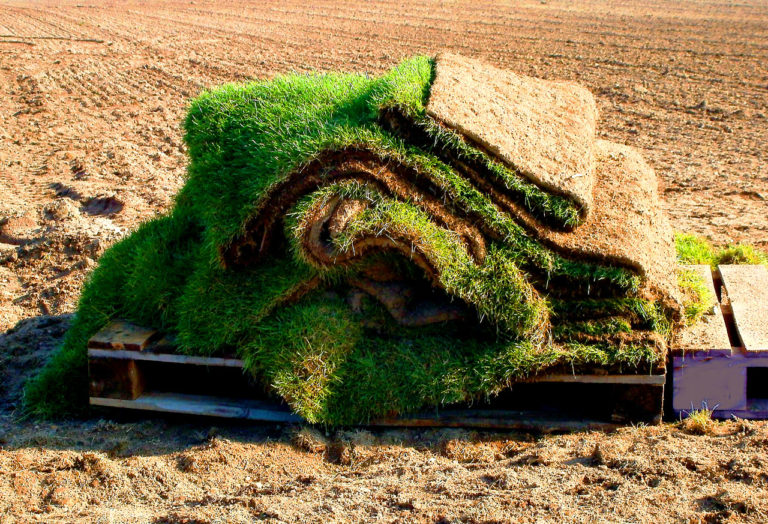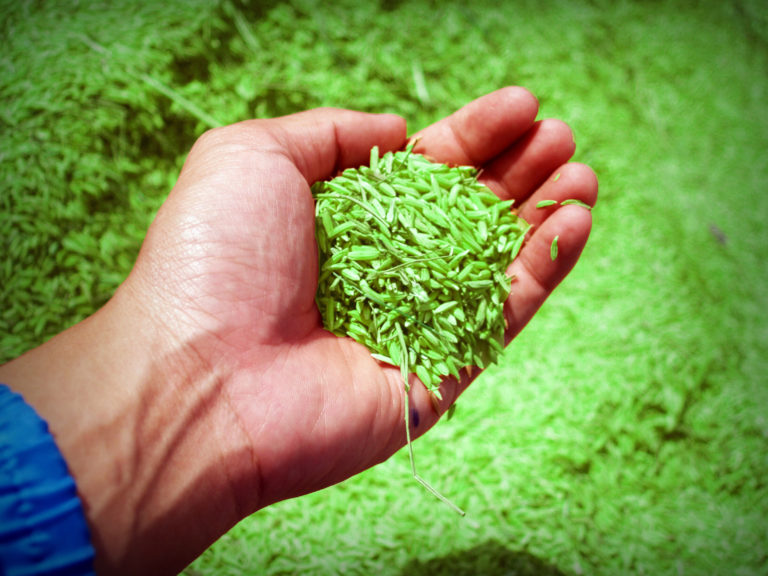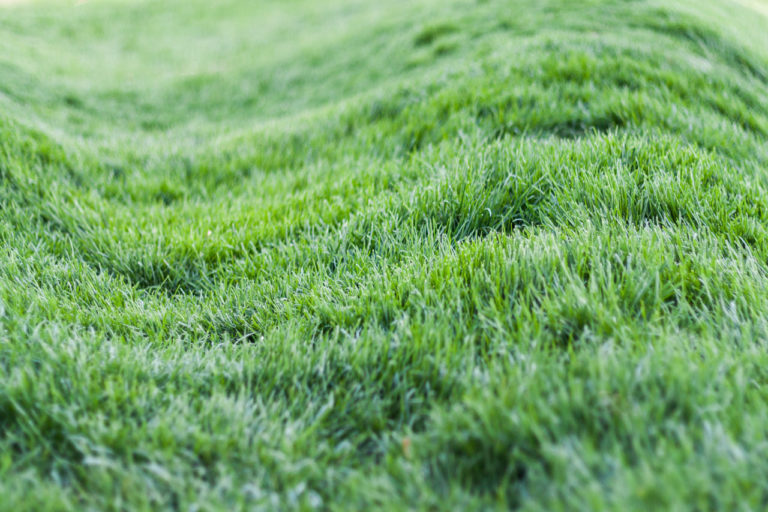Crabgrass is a grass weed that is difficult to control once it has spread on the lawn. But you might have heard that robotic mowers can fight crabgrass. Here I want to explain to you exactly how robotic mowers kill crabgrass and other lawn weeds.
How do robotic mowers combat crabgrass? The robotic mower mows the lawn every one or two days, which greatly weakens the crabgrass, while the mulching system of the robotic mower ensures continuous fertilization for your lawn, which makes it even more difficult for the crabgrass to spread. In the long term, the crabgrass will be completely eradicated from the lawn after one to two years thanks to the good lawn care provided by the robotic mower.
Why this works so well, I will explain in the following article.
Contents
How exactly does the robotic mower fight the crabgrass?
Crabgrass can easily spread throughout your yard, once it has settled there, so individual specimens can and should be cut out, as soon as possible. However, once it has spread over a larger area, this is often no longer an option. With the right lawn care, however, crabgrass can be prevented and an already existing endemic can also be controlled in the long term.
In order to combat crabgrass the lawn must be properly maintained.
- Regular and sufficient watering prevents holes and brown spots where the crabgrass likes to settle
- The lawn should be mowed at least once a week. Invasive lawn-hungry grasses do not tolerate frequent cutting and become weakened
- Regular fertilization is best for cultivated lawns, but not necessarily for invasive plants, which means that fertilized lawns are better able to resist and displace intruders
- Scarifying can also help to drive away crabgrass and other weeds
- Lawn edging stones are not only useful for the robotic mower, but also prevent the crabgrass from re-entering the lawn, as it spreads mainly through its roots
The robotic mower takes some of these tasks off your hands. It mows the lawn not only once a week, but every day (or alternatively every second day). The crabgrass does not like this at all. Due to the constant trimming, it is very much weakened and thus driven away in the long run.
The robotic mower’s mulching system also helps, as it continuously fertilizes the lawn by creating lawn mulch. A robotic mower does not completely replace fertilizing, but can provide about 40% of the necessary nutrients via lawn mulch. Since new nutrients are constantly being added, the lawn grows stronger and makes it very difficult for the crabgrass to spread.
Crabgrass spreads via seeds. They produce up to 150,000 seeds per season and germinate in the late spring and early summer. The inflorescence is also quite high, which is why they rarely spread via seeds on a regularly mowed lawn. In this way, the speed at which they spread is somewhat reduced.
What kind of plant is crabgrass?
Crabgrass is a plant genus within the sweet grasses. They are also sometimes referred to as finger-grass. Their scientific name is Digitaria. It occurs mostly in tropical and warm temperate regions, but can also occur throughout the cooler temperate latitudes of the world and comprises around 200 to 300 species. However, the number of species that can be found in your yard Is only made up of a small portion of these species.
The most common species of Digitaria that is found in a North American yard is the large crabgrass. It spread around the world in the 19th centuryThrough their usage by homesteaders and has now become a nuisance in many of today’s lawns.
It takes advantage of unfavorable circumstances for our common cultivated grasses, such as low fertility and drought, as it can more easily withstand these conditions that weaken other grasses.
Crabgrass is very difficult to kill, as it will easily regenerate, as long as the conditions favor it over other grasses. Chemicals like herbicides can easily harm surrounding grasses, since the plants are very closely related and it is difficult to come up with agents that only target invading weed grasses.
Although there are lawn weed killers, they only control dicotyledonous plants, such as clover, dandelion and daisies, but not crabgrass or other weeds.
As I already mentioned above, one crabgrass produces 150,000 seeds every year. These seeds stay behind and germinate in the following spring, to sprout a new generation of crabgrass in your yard.
How can the crabgrass spread on the lawn at all?
The crabgrass uses gaps in the lawn to establish itself there and spread further from there. A healthy lawn normally does not provide the couch grass with an “attack surface” where the crabgrass can settle. However, various factors can make it easier for crabgrass to settle. These are:
- Grass nutrient deficiency
- Insufficient watering of the lawn in summer
- Low quality seed
The lawn in your yard is usually a mixture of different types of grass. These are adapted to specific conditions in which they grow perfectly and do not provide space for other plants.
One of these location factors is a sufficient supply of the right nutrients. For this reason, you must always fertilize your lawn regularly so that foreign plants do not find niches and migrate into the lawn.
If the lawn is not sufficiently supplied with water during dry periods, it dies in some places and real holes are created. Weeds and grasses then have an easy time of it.
In general, crabgrass and other invading grasses are simply better adapted to “harsher” conditions in terms of nutrient and water supply, while cultivated lawns can make better use of better conditions with a lot of water and nutrients and can therefore cope better with frequent cuts by the lawn mower or robotic mower.
Good turf mixtures contain certain types of grass that specialize in filling in gaps that quickly appear in your lawn and preventing the spread of weeds and grasses. These varieties include, for example, Poa supina or Poa pratensis.
What other ways are there to combat crabgrass?
As mentioned several times before, it is difficult to fight crabgrass with chemical products without damaging your lawn at the same time. Once you have only a few specimens in your yard, you can remove those individuals. You can use a long knife or a weeding knife for this. When pricking out, you should try to remove as much of the root system as possible.
There is now a hole in the lawn where you poked out the crabgrass. This must be closed again with lawn as soon as possible. For this purpose there are special reseeding lawns or seed mixtures for lawn repair, which you can sow there.
Most of the time however, this won’t be enough. The problem is that once the crabgrass has settled in your yard, it may already have spread its seeds. Since it’s a seasonal plant, it dies during the winter time. However, its seeds will sprout new crabgrass in the next year’s spring.
Luckily this behavior can be used to your advantage. There are so called “pre-emergent” herbicides, that can be used to kill the seedlings of the plant. They must be applied before crabgrass seeds germinate during early spring when the temperatures of the soil are right.
Crabgrass starts germinating as soon as the ground has reached 55°F during 5 consecutive days.
Other than “pre-emergent” herbicides there are also “post-emergent” herbicides that can be used to control crabgrass after it has already germinated. Yet, they should only be applied to crabgrass that is visible and must be portioned carefully. The right amount of post-emergent herbicides that you can safely apply depends on the type of grass growing on your lawn.
Can I rely solely on the robotic lawnmower to remove all the crabgrass?
The bad news is, that once the crabgrass has spread its seed in your lawn, the robotic lawnmower might not be enough to completely eradicate it. The mower can only help to fight it and prevent it from returning, through constantly fertilizing your lawn and keeping it short, preventing at least some of the seedlings to be spread.
Unfortunately, crabgrass can even spread seeds when it’s cut as low as ½ inch, so the robotic lawnmower only reduces the amount of seeds spread by the crabgrass. Once it has become an issue in your yard, I would recommend using pre-emergent or post-emergent herbicides in conjunction with the robotic lawnmower, to completely get rid of the crabgrass.
Related questions
Do robotic mowers help against weeds? Robotic mowers, through their frequent mowing and constant mulching, create conditions to which the lawn is perfectly adapted, but foreign immigrant plants do not. This means that the robotic mower can effectively control weeds and drive them back in the long term. However, an effect only sets in over a long period of time. Furthermore, the robotic mower should not be the only means of weed control.
Also interesting: Do robotic mowers help against weeds?





